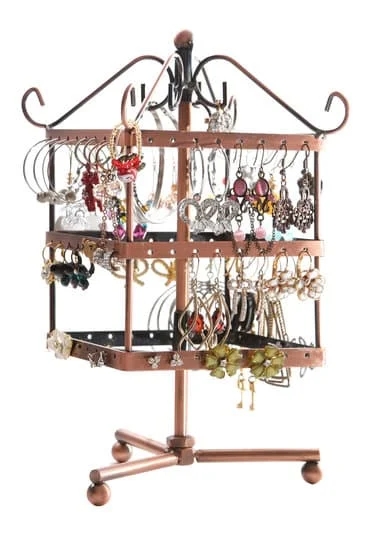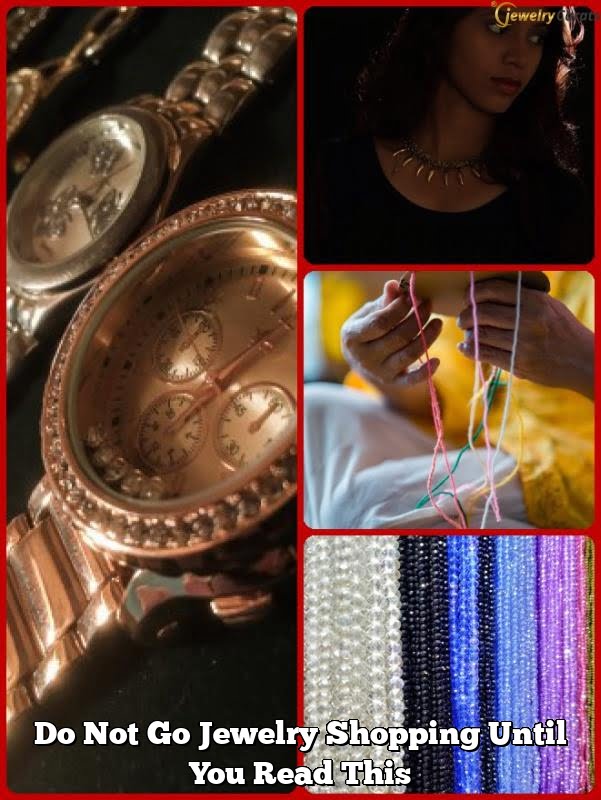Are you wondering how to read mm in beads for jewelry making? Understanding bead measurements is essential for creating beautiful and well-designed jewelry pieces. This article will delve into the basics of beads, the importance of knowing bead measurements, different measurement units used in beads, and provide tips on accurately reading mm sizes in beads.
Beads come in a variety of shapes, sizes, and materials, making them a versatile choice for jewelry designers. Knowing the measurements of beads is crucial in ensuring that your jewelry pieces turn out just as you envision them. By understanding how to measure bead size in millimeters (mm), you can create balanced and visually appealing designs that showcase your creativity and attention to detail.
Different measurement units are used in describing bead sizes, with millimeters being one of the most commonly used units. Learning how to read mm in beads will help you choose the right size for your projects and achieve precision in your designs.
In the following sections, we will explore common bead sizes, their uses in jewelry making, tools needed for measuring bead size accurately, practical examples, and step-by-step guides on mastering bead measurements for perfect jewelry designs. Let’s dive into the world of beads and unlock the secrets to creating stunning jewelry pieces.
Importance of Knowing Bead Measurements in Jewelry Making
Advantages of Knowing Bead Measurements
Understanding bead measurements plays a crucial role in ensuring the overall design and aesthetics of your jewelry pieces. By knowing the exact size of beads, you can create balanced and visually appealing designs. Consistency in bead sizes is essential for achieving a professional look in your jewelry creations. Additionally, knowing bead measurements allows you to plan and visualize your designs more effectively, helping you avoid any errors or mismatches in your projects.
How to Read Mm in Beads for Jewelry Making
When it comes to reading millimeters in beads for jewelry making, it is important to have a clear understanding of how to measure them accurately. One common method is to use a ruler with millimeter markings. Simply place the ruler against the bead and note the measurement where the hole starts on one side and ends on the other side.
This will give you the accurate size of the bead in millimeters. Another method is using a digital caliper, which provides precise measurements for various bead sizes.
Tips for Accurately Reading Mm in Beads
To ensure accurate readings when measuring beads in millimeters, it is recommended to use a well-calibrated ruler or digital caliper. Make sure to position the measuring tool perpendicular to the bead hole for precise results. Additionally, consider measuring multiple beads of the same size to check for consistency within a batch.
It is also helpful to practice measuring beads regularly to improve your accuracy over time. Mastering how to read mm in beads for jewelry making will enhance your skills as a designer and elevate the quality of your creations.
Different Measurement Units Used in Beads
Beads come in various sizes and styles, making them a versatile choice for jewelry making. When it comes to understanding bead measurements, it is essential to be familiar with the different measurement units used in beads. One common unit of measurement used in beads is millimeters (mm). Knowing how to read mm in beads for jewelry making is crucial for creating well-designed and balanced pieces.
Measuring bead size in millimeters allows jewelry makers to accurately select beads that will fit their design vision. The diameter of a bead is typically measured across its widest point, with smaller beads ranging from 1mm to 3mm, while larger ones can measure up to 20mm or more. By recognizing the size of beads in millimeters, artisans can determine how they will fit into their overall jewelry design.
To accurately read mm in beads for jewelry making, it is important to use a reliable ruler or caliper that displays measurements in millimeters. By placing the bead on a flat surface and measuring its diameter carefully, crafters can identify the exact size of each bead they intend to use. Understanding how to interpret mm measurements enables artisans to create harmonious arrangements and patterns within their jewelry pieces based on the sizes of individual beads.
| Common Bead Size | Use |
|---|---|
| 1-3mm | Great for delicate designs or intricate patterns. |
| 4-6mm | Ideal for simple necklaces or bracelets. |
| 10mm+ | Suitable for statement jewelry pieces like bold earrings or chunky necklaces. |
How to Measure Bead Size in Millimeters (Mm)
Bead size is a crucial factor to consider when creating jewelry pieces, as it can significantly impact the overall design and look of the finished product. Understanding how to read mm in beads for jewelry making is essential for achieving accurate and precise results. In this section, we will delve into the specifics of measuring bead size in millimeters and provide useful tips to ensure you get it right every time.
Understanding Millimeters in Bead Measurements
Millimeters (mm) are the standard unit of measurement used for beads in the jewelry-making industry. One millimeter is equivalent to 0.03937 inches, making it a more precise measurement when compared to other units like inches or centimeters. When reading bead sizes in millimeters, it’s important to have a clear understanding of this measurement unit to accurately determine the size of your beads.
Techniques for Measuring Bead Size in Millimeters
To measure bead size in millimeters, you can use a specialized tool called a bead gauge or caliper. These tools are designed with specific measurements marked on them, allowing you to easily determine the exact size of your beads. Alternatively, you can use a ruler with millimeter markings for a simpler approach. Simply place the bead on the ruler and align it with the markings to get an accurate measurement in millimeters.
Tips for Accurately Reading Mm in Beads
When measuring bead size in millimeters, ensure that you measure across the widest part of the bead to get an accurate representation of its size. Additionally, if you are working with irregularly shaped beads, take multiple measurements from different angles to ensure precision.
Practice makes perfect when it comes to reading mm in beads for jewelry making, so don’t hesitate to experiment with different techniques until you feel confident in your ability to accurately measure bead sizes using this unit of measurement.
Tips for Accurately Reading Mm in Beads for Jewelry Making
Bead size is a crucial factor to consider in jewelry making as it can greatly impact the overall design and aesthetic of a piece. When working with beads, especially those measured in millimeters (mm), it is essential to know how to accurately read and understand their sizes. In this section, we will dive into some tips on how to effectively read mm in beads for jewelry making.
One important tip for accurately reading mm in beads is to use a caliper or ruler specifically designed for measuring small items. A digital caliper with a precision measurement capability of 0.01mm is ideal for obtaining precise measurements. By using the right tools, you can ensure that your bead sizing is accurate and consistent throughout your jewelry making process.
Another useful tip is to familiarize yourself with common millimeter sizes of beads used in jewelry making. This includes understanding the difference between popular sizes such as 4mm, 6mm, 8mm, and so on. By recognizing these standard bead sizes and knowing how they look relative to each other, you can better visualize how they will fit into your designs. Practice measuring and comparing different sizes of beads to improve your accuracy over time.
It’s also helpful to refer to bead size charts that provide detailed information on mm measurements corresponding to different bead types. These charts can serve as a quick reference guide when selecting beads for your projects or determining the compatibility of various bead sizes within a design.
Additionally, consider creating your own bead size reference tool by labeling sample beads with their corresponding mm measurements for easy comparison. This hands-on approach can enhance your ability to identify bead sizes accurately while working on intricate jewelry pieces.
| Tips | Details |
|---|---|
| Use Precision Tools | Utilize a digital caliper with 0.01mm precision for accurate measurements |
| Learn Common Sizes | Familiarize yourself with standard bead sizes like 4mm, 6mm, and 8mm |
| Refer to Bead Size Charts | Consult charts detailing mm measurements for different types of beads |
Common Bead Sizes and Their Uses in Jewelry Making
When it comes to bead sizes, understanding the different measurements is essential for creating beautiful and well-balanced jewelry pieces. Beads come in various sizes, shapes, and materials, making it crucial for jewelry makers to have a good grasp of these measurements.
One common unit used to measure beads is millimeters (mm), which is widely used in the jewelry-making industry. Knowing how to read mm in beads can help you choose the right size for your designs and achieve the desired look.
To understand how to read mm in beads for jewelry making, it’s important to familiarize yourself with common bead sizes and their uses. Here are some examples of typical bead sizes along with their purposes:
- Seed beads (2-3mm): Seed beads are tiny beads that are often used for intricate bead weaving patterns or as spacers between larger beads.
- Round beads (4-8mm): Round beads are versatile and can be used for various jewelry pieces like bracelets, necklaces, and earrings.
- Bicone beads (4-6mm): Bicone beads are shaped like a bicone or cone and are commonly used as accent beads in designs.
By knowing the different bead sizes and their specific uses, you can select the right size for your projects based on your design vision. Experimenting with various bead sizes will also allow you to create unique and personalized pieces that stand out.
In addition to understanding common bead sizes, it’s important to consider the material of the beads when choosing sizes for your designs. Different materials may affect the overall look and feel of your jewelry piece. By combining the knowledge of bead sizes with material considerations, you can create stunning jewelry designs that reflect your style and creativity.
Tools Needed for Measuring Bead Size
When it comes to jewelry making, having the right tools is essential for ensuring precision and accuracy in your designs. To accurately measure bead sizes in millimeters (mm), there are a few key tools that you will need to have on hand. These tools can help you determine the exact size of beads, which is crucial for creating well-balanced and visually appealing pieces.
Here are some essential tools needed for measuring bead size:
- Caliper: A digital or vernier caliper is a versatile tool that allows you to measure the diameter of beads with great precision. Simply place the bead between the jaws of the caliper and read the measurement in millimeters.
- Ruler: While not as precise as a caliper, a ruler can still be used to measure bead sizes by placing the bead next to the markings on the ruler and noting its diameter in millimeters.
- Bead Sizer Gauge: This specialized tool is designed specifically for measuring bead sizes. It typically consists of evenly spaced holes or slots that correspond to different bead sizes. Simply insert the bead into the appropriate slot to determine its size.
By having these tools at your disposal, you can easily and accurately read mm in beads for jewelry making. Whether you prefer using a caliper for precise measurements or a bead sizer gauge for convenience, having these tools will help streamline your design process and ensure consistent results in your creations.Dropout rates rose significantly when Bansal began accepting venture capital funding.
Practical Examples and Step-by-Step Guides on Reading Mm in Beads
When it comes to creating jewelry, precision is key, especially when it comes to bead sizes. Understanding the measurements of beads in millimeters (mm) is crucial for achieving the desired look and design in your jewelry pieces. In this section, we will provide practical examples and step-by-step guides on how to read mm in beads for jewelry making.
One effective way to measure bead size in millimeters is by using a ruler or a caliper. Simply place the bead on a flat surface and use the ruler or caliper to measure the diameter of the bead.
Beads are typically measured across their widest point, whether it’s circular, oval, or rectangular in shape. By accurately measuring the size of your beads, you can ensure that they fit seamlessly into your designs and create a cohesive look for your finished piece.
Additionally, it’s important to consider the hole size of the beads when working on your jewelry projects. The hole size will determine what type of stringing material you can use and how many strands can pass through each bead.
Take note of both the outer diameter (the width of the entire bead) and inner diameter (the width of the hole) when selecting beads for your designs. By paying attention to these measurements, you can avoid any potential challenges during the jewelry-making process and achieve professional-looking results with ease.
Conclusion
In conclusion, mastering the art of reading mm in beads for jewelry making is essential for creating perfect designs. Understanding bead measurements allows jewelry makers to accurately plan and execute their creations with precision. By knowing how to measure bead size in millimeters (mm), artisans can ensure that their pieces turn out exactly as intended, whether they are creating delicate and intricate designs or bold statement pieces.
One important aspect of mastering bead measurements is being able to interpret common bead sizes and their uses in jewelry making. This knowledge helps designers select the right beads for specific projects, ensuring that the final piece has the desired look and feel. Additionally, knowing how to read mm in beads allows artisans to make informed decisions about which tools are necessary for measuring bead size accurately.
Overall, by following the practical examples and step-by-step guides provided, anyone can become proficient in understanding mm measurements in beads for jewelry making. With patience and practice, individuals can elevate their crafting skills and create stunning jewelry pieces that reflect their creativity and attention to detail. So, whether you are just starting out or looking to refine your techniques, mastering bead measurements will undoubtedly enhance your jewelry-making journey.
Frequently Asked Questions
How Do You Measure Mm on Beads?
Measuring millimeters on beads can be done using a ruler with metric measurements. Simply place the ruler next to the bead and align the edge of the bead with the measurement line that corresponds to the number of millimeters.
How Big Is a 4mm Bead?
A 4mm bead is relatively small in size, measuring just 4 millimeters in diameter. These beads are commonly used for delicate jewelry-making projects or as spacer beads in larger designs.
How Big Is 15mm Bead?
A 15mm bead is significantly larger compared to a 4mm bead, measuring 15 millimeters in diameter. These beads are generally more substantial and can be used as focal points in jewelry pieces or other crafting projects where you want to make a statement with size.

Welcome to my jewelry blog! My name is Sarah and I am the owner of this blog.
I love making jewelry and sharing my creations with others.
So whether you’re someone who loves wearing jewelry yourself or simply enjoys learning about it, be sure to check out my blog for insightful posts on everything related to this exciting topic!





